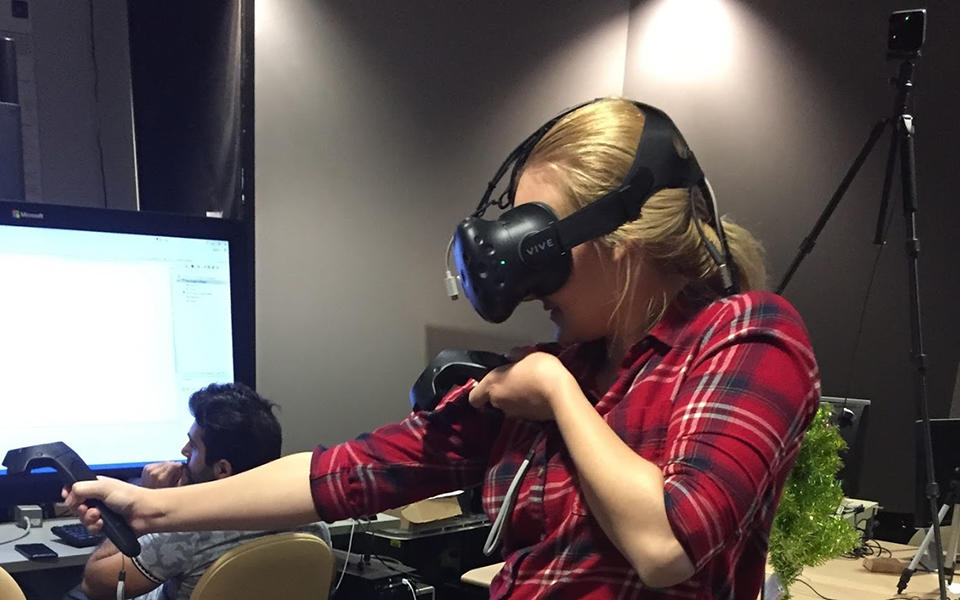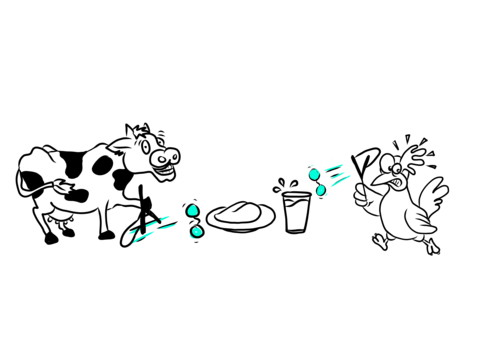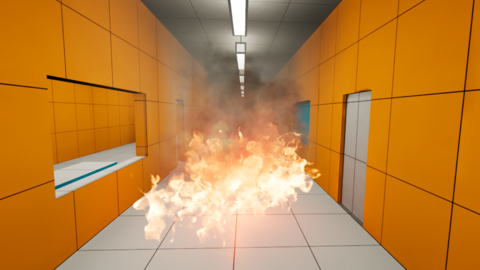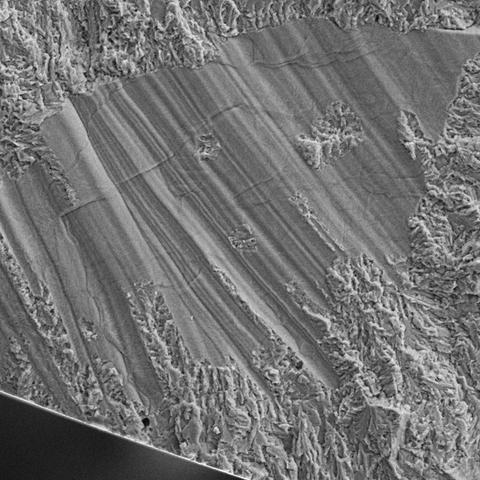Taking Measure
Just a Standard Blog
Passing Photons Through Chicken, VR for First Responders, and 3D-Printed Metal: A Sample of Stories on NIST Social Media

NIST postdoctoral associate Kate Kapalo using virtual reality equipment.
Sending “spooky” pairs of photons through biological materials, using virtual reality to test emergency communications technology, bolstering confidence in the latest manufacturing techniques — NIST has no shortage of exciting developments, despite our largely remote workforce at the moment. Here are just a few of the happenings in the lives and research of our stellar staff members that we’ve published over the last few months on NIST social media.
What Happens When Two Photons Walk Into a Chicken?

In weird but potentially practical news, NIST researchers headed to the grocery store to find out. Not as a joke, but as a step toward better imaging methods for medicine. Let us explain.
Quantum physics is famous for cool, spooky phenomena like teleportation — of data, that is, not people as in Star Trek. But can quantum physics be applied to biological entities?
In fact, yes. NIST researchers are applying nonclassical, quantum light to biological materials you might find in a grocery store.
The team recently built a special instrument to create pairs of photons, particles of light, with linked properties, a phenomenon called entanglement. The researchers then used their instrument to send entangled photons through microscope slides containing skim and 2% milk and thin slices of chicken.
Most photon pairs were scattered or absorbed or otherwise lost, but those that survived the entire trip did so with their entanglement intact. Specifically, an average of about 1.6 photon pairs per second — about 1% of those that started the trip — made it through the thickest chicken sample still entangled.
The results support growing research efforts around the world — including here at NIST — using nonclassical light to boost the sensitivity, specificity and resolution of biological imaging and sensing. These new microscopy methods could help us advance regenerative medicine through the better observation of living cells and tissues or the study of memory and learning.
Learn more about the achievement in Biomedical Optics Express.
Virtually Real

Fires, floods, medical crises, mass-transit accidents, active shooter incidents — first responders head into each of these emergencies for your safety. Circumstances in extreme environments can cut down the performance of tools that work perfectly in an isolated laboratory.
And our public safety professionals can’t afford a lapse in their equipment’s effectiveness when precious seconds pass by. Virtual reality allows for rapid prototype development and training without the introduction of these dangerous hazards.
Now, a team of researchers at NIST is using cutting-edge virtual reality simulations to test the technology that public safety heroes bring with them. NIST postdoctoral associate Kate Kapalo (featured image) works to ensure that our simulations match up as closely as possible to the real thing, interviewing the experts on scene and pulling from her own expertise in human factor psychology and computer science.
Together, we can safely put emerging technology into a first responder’s pocket and trust its reliability when lives are on the line. Virtual reality, an emerging technology in and of itself, can help us get there if we get the details right.
Dispelling Distrust in 3D-Printed Metal Parts

All manufactured materials have defects that can ultimately lead to their failure. But even though manufacturers know this, they are turning away from a new manufacturing technique at the first sign of defects because they don’t have the same confidence in it as their old techniques. NIST and nine other scientific institutions around the globe want to combat this distrust.
Additive manufacturing of metals — building up a 3D shape from thin layers of metal powder melted into place by a laser or electron beam — is spreading across industries, and with good reason. More complex designs are possible than ever before.
We can make parts lighter for more fuel-efficient cars and aerospace vehicles.
We can shorten a lengthy manufacturing process into one or two steps.
We can cut down on wasted materials by only using what we need for a specific part’s shape.
But we can’t take full advantage of these capabilities yet.
A lack of familiarity with these technologies currently keeps manufacturers from using them for the critical parts that keep people safe (in cars and airplanes, for example). It’s a valid concern when poor performance puts lives at risk.
That’s why traditional manufacturing methods have well-established frameworks to predict the lifespan of materials and components. Unfortunately, these existing frameworks don’t apply to additive manufacturing, which has its own set of challenges to match its unique process.
To bolster confidence, researchers from NIST and institutions in Germany, France, the United Kingdom, Italy and the Czech Republic have proposed a modified framework to predict lifespan in additive manufacturing. Read through the paper, published in Progress in Materials Science.
To get news like this and other updates, follow NIST on social media:
- National Institute of Standards and Technology
- National Initiative for Cybersecurity Education
- Organization of Scientific Area Committees
- Communications Technology Laboratory
- Manufacturing USA group
- Manufacturing Extension Partnership
- SURF program





